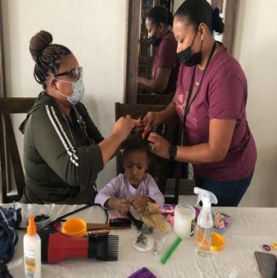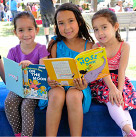When a pair of CCRC Head Start teachers learned a mother was struggling to care for the hair of her foster child, they immediately felt the need to step in and help. The child is African American and her foster mother, who is Hispanic, was unfamiliar with the products and techniques required for her child’s hair. So teachers Sherniece Spiller and Lynette Whitehurst enlisted the help of their fellow teacher, Araceli Quesada, and devised a plan to help.
When the mother contacted CCRC, she shared that despite her best intentions, her child’s hair was breaking off and falling out.
“The problem was her hair was breaking off really bad because mom wasn’t using the correct conditioner, shampoo or moisturizer for her hair,” says Lynette.
So Sherniece and Lynette put together a basket of hair products made specifically for African American hair and Sherniece created for the woman a hand-written pamphlet on hair care. They scheduled a visit to the family’s home to demonstrate the proper hair care.
But also important to the two teachers was expressing the cultural significance of Black hair. Along with the self-confidence aspect, hair has meaningful cultural roots.
“In history, in our culture, we were programmed that our hair was bad so we had to wrap it up and keep it tied,” says Sherniece. “But now we’re comfortable coming out with our natural hair. So as I was doing (the child’s) hair, I was just talking to her, telling her affirmations, saying ‘you have beautiful hair, your hair is lovely and don’t let anyone tell you anything different.’ And when we were done, she looked in the mirror and I said ‘this is your crown.’”
With her “crown” combed and styled, the girl brimmed with pride and smiled at her reflection.
“All the other kids were like ‘wow, you look beautiful,” recalls Lynette. “And she looked at herself in the mirror and you could tell her self-confidence really shined through and she felt like ‘I’m so beautiful.’ She felt like a princess.”
The teachers had no idea the powerful, emotional impact their help would have on the child’s foster mother, too. As she relayed to the mother in Spanish the step-by-step instructions provided by Sherniece and Lynette, Araceli saw relief wash over the woman’s face.
“As I was translating for her, I could see her smile and see tears in her eyes,” says Araceli. “She said ‘thank you so much for all you guys are doing.’ It touches your heart when you’re helping a family, seeing them so happy and listening to their stories. This mom has so many things to share with us, it’s like ‘Oh my God,’ it breaks my heart.”
The weight of this special moment settled in on the three teachers, who arrived at the family’s home that day anticipating a simple tutorial session. Instead, they left with a bond between them and this family.
“I could see in the mom’s face – the fact that she was humbled and not afraid to say ‘hey, I need help,’ that touched my heart,” Sherniece says. “And she said she’s going to be her forever mom because she’s in the process of adopting her. So she wants to know how to care for her hair so when she gets up in the morning and goes to school, she can look like the other little girls.”
“When we were doing her hair, mom started feeling really comfortable being with us and she wanted to share with us – she went to the room and she had a binder for each child,” says Lynette, recalling how the woman shared photos of the girl as a baby in the hospital. “It touched my heart because mom felt a closeness to want to share that with us. She felt like, I guess, we’re new friends to her – or not just friends, but family.”
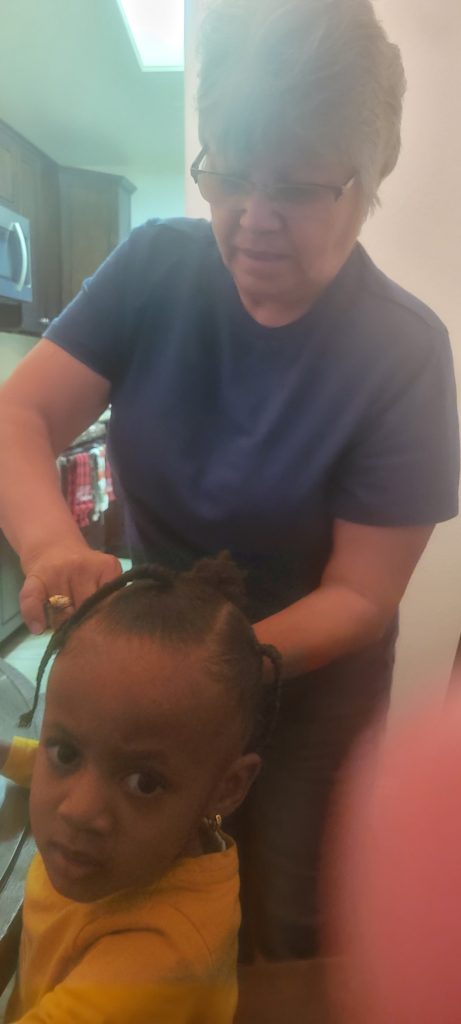
Mom now knows how to do her child’s hair. 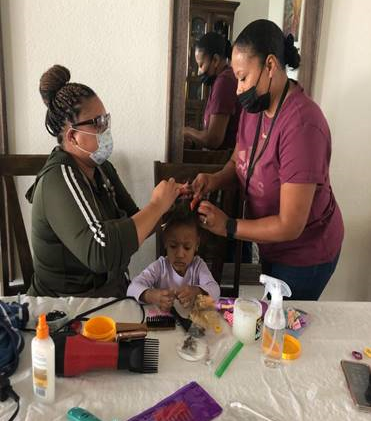
Sherniece and Lynette style the girl’s hair. 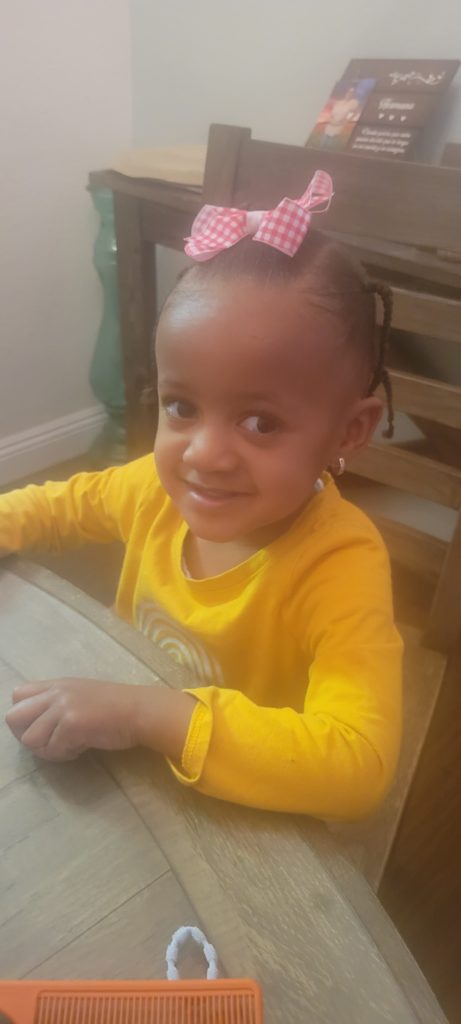
Her new hairdo left her full of confidence.

